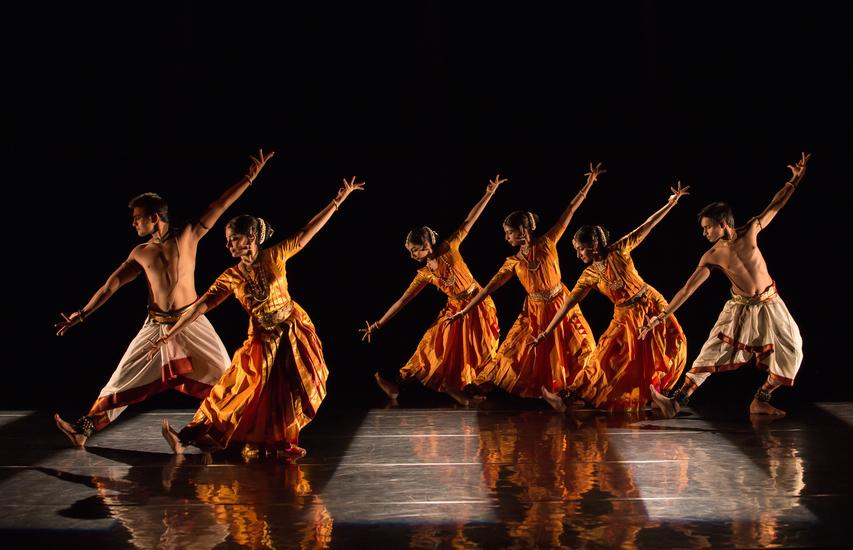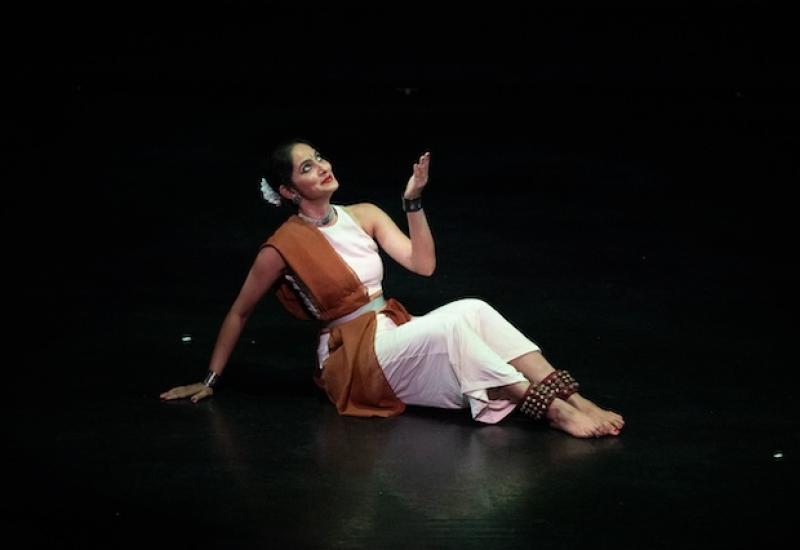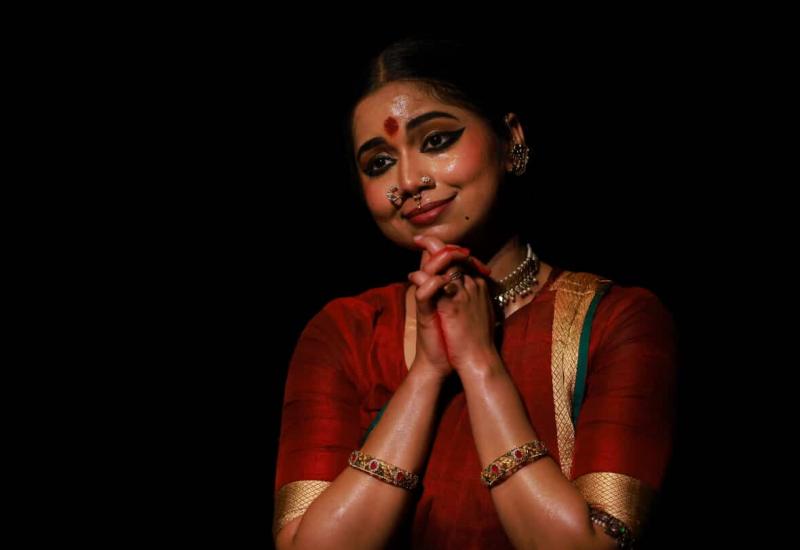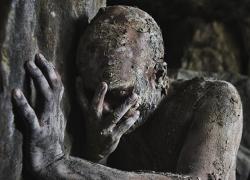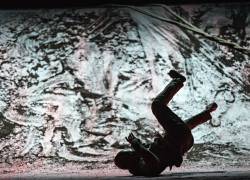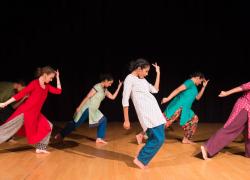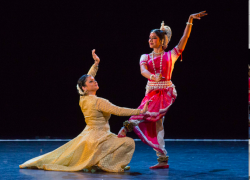Thari – The Loom
Malavika Sarukkai
Tuesday 24 April 2018
Queen Elizabeth Hall, Southbank Centre, London
Reviewed by Donald Hutera
The links between dance choreography and weaving, particularly as the latter relates to the creation of the sari, are central to this ambitious but not entirely satisfying new production by the bharatanatyam specialist Malavika Sarukkai. The connection makes sense, too, given that both undertakings are concerned with structure and patterns, harmonious planes of motion or colour, design and more.
The opening ensemble is set up by a portentous male voice-over sonorously intoning about the loom and the threads upon it coming alive. The text, alas, is largely unnecessary, off-putting and old-fashioned. Luckily the dancing, by a cast of six including Sarukkai herself, is a pretty lively stream of side-steps, splay-legged jumps and clapping. The central area of the bare stage, fairly handsomely lit throughout by GyanDev Singh, occasionally becomes a shaded square bordered by a brighter path upon which a few dancers promenade. Sometimes they carry spindles, twirling them between their fingers, or they revolve on the spot. Arms, too, are speedily rotated round each other in front of the body. Abetted by an arrangement of machinery sounds, the purpose behind all this motion is to try and simulate the rhythms of a handloom in operation.
More disembodied talk follows. The words Sarukkai speaks mainly work, probably because she sounds considered and personal. However, what we hear her say about the sari – describing it as ‘an emotion, a state of mind, sometimes a statement’ rather than just a simple garment – lacks the metaphorical weight for which I suspect she and her chief creative collaborator, the film-maker and writer Sumantra Ghosal, were reaching. Similarly, ideas of warp and weft read well in programme notes when compared to Krishna’s flute and Radha’s desire, but ultimately don’t carry much emotional uplift or deeper spiritual heft when transferred onstage.
Still, at 80 minutes or so the performance isn’t at all intolerable. The dancers – four women, two men prettily clad by Sandhya Raman – are highly capable. There are some attractive duets. Sarukkai is a fine soloist, investing herself in her dancing but for me not fully inhabiting it. Her choreography – which she termed ‘classical with a very contemporary introspection’ during a post-show talk – generally hints only intermittently at a greater, more captivatingly layered and sustained complexity. In the production’s later segments she and her dancers embody various birds (parrot, peacock, swan). Some of this material is inventive and pleasing if also lacking, at times, a more pulse-quickening dynamic. What’s missing over-all is true beauty. Sure, it gets spoken about. But, apart from some ephemerally pretty arrangements of bodies, the aesthetic pleasure to be derived from viewing pictures of saris even, say, online didn’t occur for me at this live, three-dimensional performance. Visually and kinetically it’s simply not strong, vivid or maybe even radical enough to achieve that kind of transporting impact. Aside from the occasionally dodgy spoken text the work perhaps fares best aurally. One of its most successful elements is a soundtrack featuring contributions from Sai Shravanam, Aditya Prakash and C.V. Chandrasekhar, most working from Sarukkai’s musical concepts.
Towards the end Sarrukai speaks of how the sari helps her ‘live life to the full.’ For her it’s not just fabric but something liberating and profound. She and the other dancers then proceed to line up downstage and beat out some impressively fast, unison footwork. Meanwhile the lighting behind and atop them becomes bright yet literally spotty. Gradually they appear to disintegrate and become absorbed in some starry, cosmic night, their frail-sounding but human voices replacing a more enveloping, pre-recorded hum. Nice, but I wasn’t truly moved or convinced.

